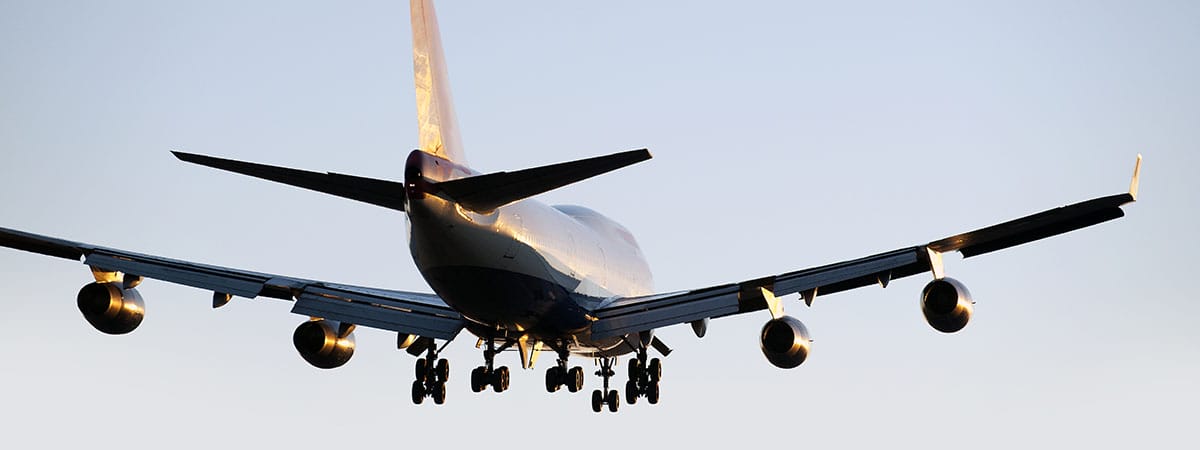Since the dawn of aviation, nature has not only posed a challenge that must be overcome, it has also served as a rich source of inspiration. At the heart of this convergence lies biomimicry, a practice where engineering meets biology to create solutions that are both innovative and sustainable. In this article, we explore how closely observing nature has led to revolutionary breakthroughs in aerospace technology, demonstrating that, despite all the progress we have made, we are still learning from the original masters of flight: the creatures of the natural world. By embracing these lessons from nature, we find new ways of flying that are more efficient, less invasive and more planet-friendly.
Biomimetics is the science that studies nature as a source of inspiration for developing innovative technologies and solving problems, and it is an essential practice for aeronautics.
Silent flight of owls
Aviation and wind power generation have followed nature’s lead towards silent operation, modelled on the flight of owls. Their serrated-edged wings allow them to fly almost undetected, serving as an inspiration for engineers seeking to reduce turbulence and noise in turbine blades and aircraft wings. This mimicry of owl wings has led to substantial noise reductions, improving the flying experience and life around airports and wind farms.
As well as being quiet, adapting these features of nature promotes more sustainable aviation and energy generation. For example, wind turbines designed to resemble owl wings are not only less noisy, they are also more efficient, improving energy conversion and reducing wind resistance.
These innovations highlight the power of biomimicry to develop advanced, sustainable solutions, shaping a future where technology and nature live side by side in harmony.
Bird flapping
Bird flapping, a model of efficiency and adaptability, has always been a vital source of inspiration for aerospace engineering. This natural ability to adjust speed, direction and lift with pinpoint accuracy has led to a rethink in the design of propulsion and air traffic control systems.
The wide variety of bird flight patterns, from falcons that reach high speeds to the nimble manoeuvring of swallows, suggests a range of strategies that can be applied to the development of drones and aircraft that require high manoeuvrability and energy efficiency.
Inspired by flapping motions, drones have been designed with articulated wings that improve both hovering and energy efficiency, adapting to various environmental conditions and optimising aerodynamics for each mission. This approach is also shaping the design of control surfaces for traditional aircraft, improving stability and control when faced with challenges such as wind gusts and turbulence. This breakthrough not only promises safer and more comfortable aircraft, but also highlights biomimicry’s potential to revolutionise aerospace technology, heralding a future where innovation and nature can go hand in hand.
Thermals
Aerospace engineering has taken inspiration from the natural model of harnessing thermals –an example of natural efficiency– as the basis for designing more energy-efficient aircraft. This principle, exhibited by soaring birds that climb using heat from the ground, has been applied to the development of gliders and light aircraft. By using hot air currents generated by the sun and the effect of the terrain, these vehicles can fly long distances without mechanical propulsion, have a remarkable ability to minimise energy consumption, and are extremely lightweight. This adaptation paves the way to reduce reliance on fossil fuels and suggests the potential for aviation to have a smaller environmental footprint, with applications in tourism, scientific research and conservation.
Applying this knowledge to drones and UAVs has increased their energy efficiency, extending flight duration. This is critical for surveillance and rescue missions, where long ranges are essential.
Flight of bees
The flight of bees is a marvel of natural engineering, defying conventional wisdom with their ability to carry loads that are heavier than their own weight. This ability has prompted aerospace engineering to rethink the design of aircraft and drones, seeking to optimise energy efficiency and payload. Observing how bees deal with weight variations has led to significant progress in aerodynamics and load distribution, allowing aerial vehicles to adapt dynamically to different conditions without sacrificing manoeuvrability.
This approach has led to the development of flight systems that mimic the flexibility of bees, resulting in more sustainable vehicles with lower fuel consumption and higher payloads. It has also led to new UAVs that specialise in efficiently transporting loads that are proportional to their size, auguring well for innovations in logistics and exploration. This paradigm, inspired by the flight of bees, again illustrates how nature effectively overcomes complexities.
Nest structure
Bird nest construction is remarkable for combining light weight and structural strength, inspiring innovations in aerospace design. Emulating this natural ingenuity of birds, aerospace engineering is striving to develop lighter, more flexible and stronger structures, by applying these principles to fuselages, panels and satellite components. By using advanced composite materials and designs inspired by the structure of nests, energy efficiency is improved and the payload of aircraft and spacecraft is increased, achieving the perfect balance between weight and durability.
3D printing or additive manufacturing is emerging as a key tool in this approach, enabling aerospace components to be manufactured on-site using recyclable or local materials, which is ideal for long space missions. This method is making it easier to create complex, customised and efficient structures, ushering in an era of spatial exploration and habitability with a high degree of adaptability and sustainability. The inspiration, taken from birds’ nests, not only reflects the inherent creativity of nature but is also another fine example of biomimicry.
Looking ahead, biomimetics is beckoning a future where aerospace innovation and the lessons of nature go hand-in-hand, steering us towards developments that are as sustainable as they are, in some cases, revolutionary.
This path invites us to dream of skies that are lined with technologies that not only push the limits of aeronautical efficiency every day, but also, as a result, help us to protect the environment and the planet.
The more we learn from birds, the more likely we are to find solutions to the challenges posed by aerospace development. By continuing to learn about the natural wonders that surround us, we are embarking on a journey towards a future in which flying increasingly becomes the ultimate expression of harmony between humankind and nature.



